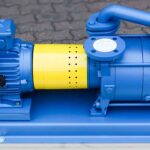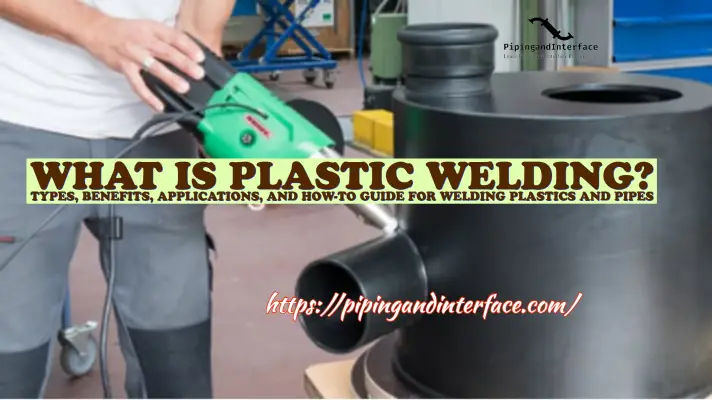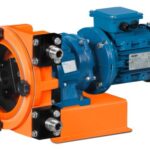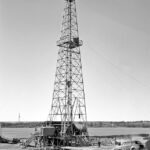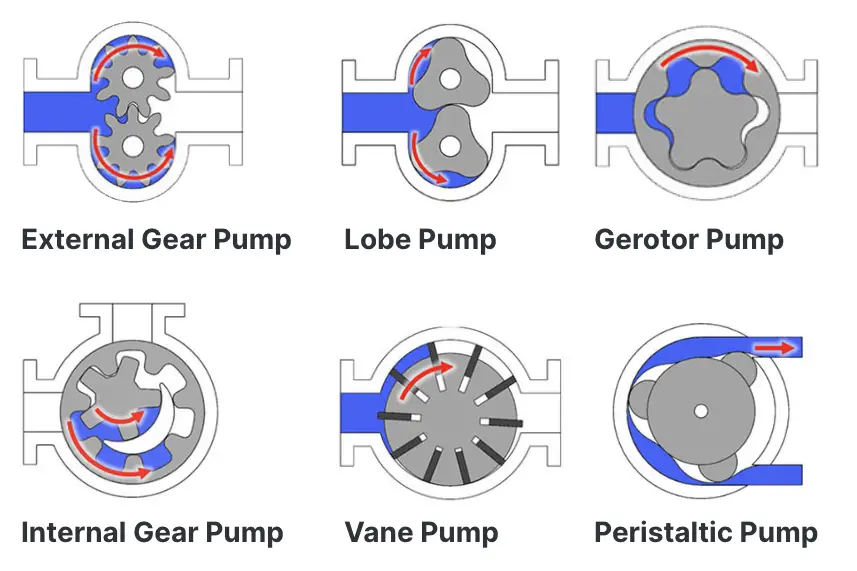In the world of HVAC systems, external static pressure (ESP) is a critical, though often overlooked, aspect that can significantly influence the performance and efficiency of your heating, ventilation, and air conditioning setup. This detailed guide will explore what external static pressure is, why it’s important, how it impacts your HVAC system, and strategies for managing and optimizing it.
What is External Static Pressure?
External static pressure refers to the resistance that air encounters as it flows through the ductwork in an HVAC system. Unlike internal static pressure, which is generated within the equipment itself, external static pressure arises from factors within the duct system, including its design, material, and any obstructions.
Components Influencing External Static Pressure
- Duct Design and Layout:
- Duct Size: The dimensions of the ducts are crucial. Narrow ducts restrict airflow more than wider ones. Proper sizing is essential to balance airflow and minimize resistance.
- Duct Shape: Round ducts generally offer less resistance compared to rectangular or square ducts. Sharp turns and bends in the ductwork can also create turbulence and increase static pressure.
- Duct Material:
- Smooth vs. Rough Surfaces: Smooth, rigid ducts tend to have lower resistance compared to flexible or corrugated ducts. The roughness of the duct’s interior surface affects how easily air can flow through.
- Duct Insulation:
- Insulation Impact: While insulation is important for temperature control, improperly installed or excessive insulation can create additional resistance to airflow.
- Air Filters:
- Filter Type and Condition: High-efficiency filters trap more particles but also create more resistance. Clogged or dirty filters further increase static pressure, reducing airflow efficiency.
- Registers and Grilles:
- Design and Placement: The design of registers and grilles affects how air is distributed throughout a space. Blocked or poorly designed registers can significantly increase resistance.
The Importance of Managing External Static Pressure
System Efficiency
High external static pressure forces the HVAC system to work harder to push air through the ducts. This increased workload translates into higher energy consumption, which can result in significantly higher utility bills. Efficient management of ESP ensures that the system operates within its designed capacity, promoting energy efficiency and cost savings.
Comfort Levels
Inconsistent or insufficient airflow caused by high ESP can lead to uneven heating or cooling in different areas of a building. This can result in hot or cold spots, making the indoor environment uncomfortable. Proper ESP management helps ensure that air is distributed evenly, enhancing overall comfort.
Equipment Longevity
Excessive static pressure puts additional strain on the HVAC system’s blower and other components. Over time, this extra stress can lead to premature wear and tear, reducing the equipment’s lifespan and potentially leading to costly repairs or replacements. Managing ESP effectively helps extend the life of your HVAC equipment.
Airflow Volume
External static pressure directly affects the volume of air delivered to various parts of a building. High ESP can limit the amount of air that reaches the intended spaces, impacting indoor air quality and overall comfort. Ensuring optimal ESP helps maintain adequate airflow and a healthier indoor environment.
Measuring External Static Pressure
Accurate measurement of external static pressure is crucial for diagnosing and addressing issues within your duct system. Here’s a step-by-step guide to measuring ESP:
Tools Required
- Manometer or Static Pressure Gauge: These instruments measure pressure differences in inches of water column (in. w.c), which is the standard unit for static pressure measurements.
Measurement Points
- Supply Side:
- At the Supply Plenum: This is where the air exits the HVAC system. Measure the static pressure here to understand the pressure the system is generating.
- At the End of the Duct Run: Measure the static pressure at the end of the duct to assess how much pressure is being lost over the length of the duct.
- Return Side:
- At the Return Plenum: This is where air is drawn into the HVAC system. Measure the pressure at this point to gauge the pressure before the air enters the system.
- At the Beginning of the Duct Run: Measure the pressure here to understand the pressure drop occurring from the intake point.
Calculation
Subtract the pressure measurements taken at the end of the duct run from those taken at the supply plenum. The resulting value is the static pressure experienced by the air as it travels through the duct system. So, the formula for external static pressure calculation is:
ESP=Pressure at Supply Plenum−Pressure at End of Duct Run
Managing and Reducing External Static Pressure
Effective management of external static pressure involves a combination of design considerations, regular maintenance, and system upgrades. Here’s how to address ESP issues:
1. Optimizing Duct Design
Minimize Bends and Turns:
- Straight Ducts: Aim for as straight a path as possible to reduce resistance. Each bend or turn in the ductwork creates turbulence and increases ESP.
- Gentle Curves: Where bends are necessary, use gentle curves instead of sharp angles to minimize resistance.
Proper Duct Sizing:
- Calculate Correct Sizes: Use industry-standard calculations and guidelines to size ducts appropriately based on the airflow requirements of your HVAC system. Undersized ducts can significantly increase static pressure.
2. Regular Maintenance
Clean or Replace Filters:
- Regular Checks: Inspect filters monthly and replace them as needed. A clogged filter increases static pressure and reduces airflow efficiency.
- Filter Types: Choose filters that balance efficiency with minimal resistance. High-efficiency filters are beneficial but may require more frequent replacements.
Inspect Ductwork:
- Seal Leaks: Look for and seal any leaks or gaps in the ductwork. Leaks can not only increase ESP but also lead to energy loss.
- Clean Ducts: Periodically clean the ducts to remove dust and debris that can obstruct airflow and increase resistance.
3. Upgrade Components
Use Low-Resistance Ducts:
- Opt for Smooth Ducts: Consider upgrading to smooth, rigid ducts that offer less resistance compared to flexible or corrugated ducts.
Install High-Efficiency Equipment:
- Modern HVAC Systems: Newer systems are often designed to handle varying ESP levels more efficiently. They may come with features that optimize airflow and reduce pressure issues.
4. Professional Assessment
Consult with a Specialist:
- Expert Evaluation: For complex duct systems or persistent ESP issues, hiring a professional HVAC technician can provide valuable insights and solutions. They can perform a thorough assessment and recommend adjustments or upgrades.
Common Issues Related to High External Static Pressure
1. Inconsistent Airflow
High ESP often leads to uneven airflow, with some rooms receiving more air than others. This can result in temperature imbalances and discomfort. Addressing the root cause of high ESP can help achieve more consistent airflow throughout the building.
2. Noisy Operation
Increased static pressure can cause the HVAC system to operate noisily. This can be due to the blower working harder or air being forced through restrictive ducts. Proper ESP management can help reduce operational noise.
3. Increased Energy Costs
As mentioned earlier, high ESP forces the HVAC system to use more energy to push air through the ducts. This increased energy consumption leads to higher utility bills. Efficient ESP management can lead to noticeable savings on energy costs.
Total Static Pressure
Total static pressure is the sum of all the static pressures that the air encounters within the HVAC system. It includes both the pressure inside the HVAC unit (internal static pressure) and the pressure outside the unit (external static pressure).
Differences between Total Static Pressure and External Static Pressure
Both external static pressure and total static pressure are critical for understanding and optimizing HVAC system performance. External static pressure focuses on the resistance within the duct system and other external components, while total static pressure encompasses all resistances, both internal and external, that the system must overcome. Proper measurement and management of both types of pressure ensure efficient operation, better comfort levels, and longer equipment lifespan. The following table lists the major differences between the total static pressure and external static pressure.
| Aspects | External Static Pressure (ESP) | Total Static Pressure (TSP) |
|---|---|---|
| Definition | Resistance to airflow outside the HVAC unit within the duct system. | The sum of all static pressures inside and outside the HVAC unit. |
| Scope | Focuses on pressure losses within the duct system and external components. | Includes both internal pressure (within the HVAC unit) and external pressure (in the duct system). |
| Measurement Points | Measured at various points in the duct system, such as supply and return plenums, and at the ends of the duct runs. | Measured at the HVAC unit (across the blower or fan) and in the duct system. |
| Components Influencing | Duct size and design, material roughness, bends, fittings, filters, and registers. | Internal components (blower, coils, etc.) and external components (ducts, filters, etc.). |
| Impact | Directly affects airflow through the duct system, influencing efficiency and comfort. | Represents the total pressure the HVAC system must overcome, impacting overall system performance. |
| Measurement Method | Use a manometer or static pressure gauge to measure pressure differences across the duct system. | Measure internal static pressure (across the blower or fan) and external static pressure (in the ductwork) and sum them. |
| Application | Used to diagnose duct system issues, optimize design, and ensure proper airflow. | Used to evaluate overall system performance, balance the system, and ensure efficiency. |
| Example Calculation | If supply plenum pressure is 1.2 in. w.c. and end of duct run pressure is 0.8 in. w.c., ESP = 1.2 – 0.8 = 0.4 in. w.c. | If internal static pressure is 0.5 in. w.c. and external static pressure is 0.3 in. w.c., TSP = 0.5 + 0.3 = 0.8 in. w.c. |
Conclusion
Understanding and managing external static pressure is crucial for maintaining an efficient, effective, and long-lasting duct system. By optimizing duct design, performing regular maintenance, and making informed upgrades, you can significantly improve the performance and efficiency of your HVAC system.

